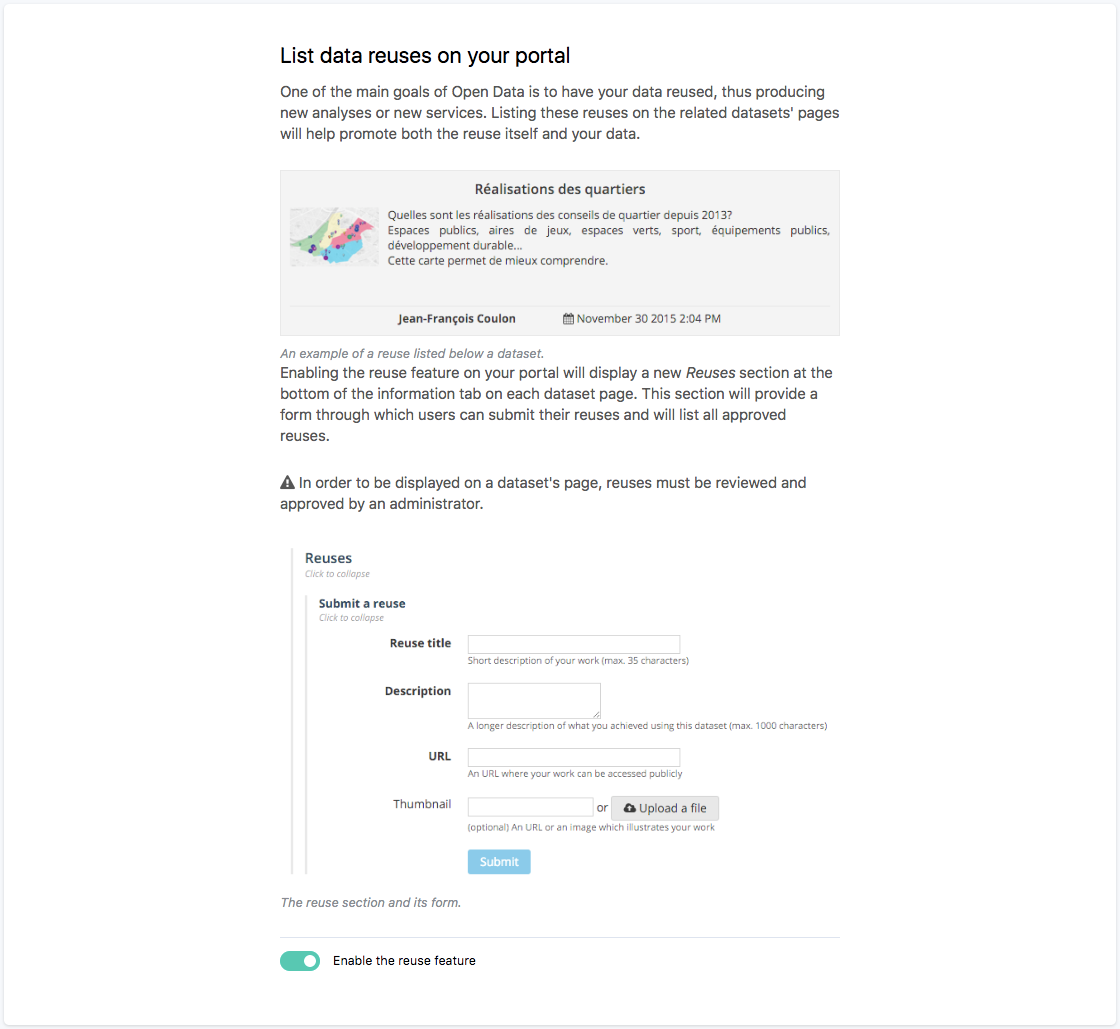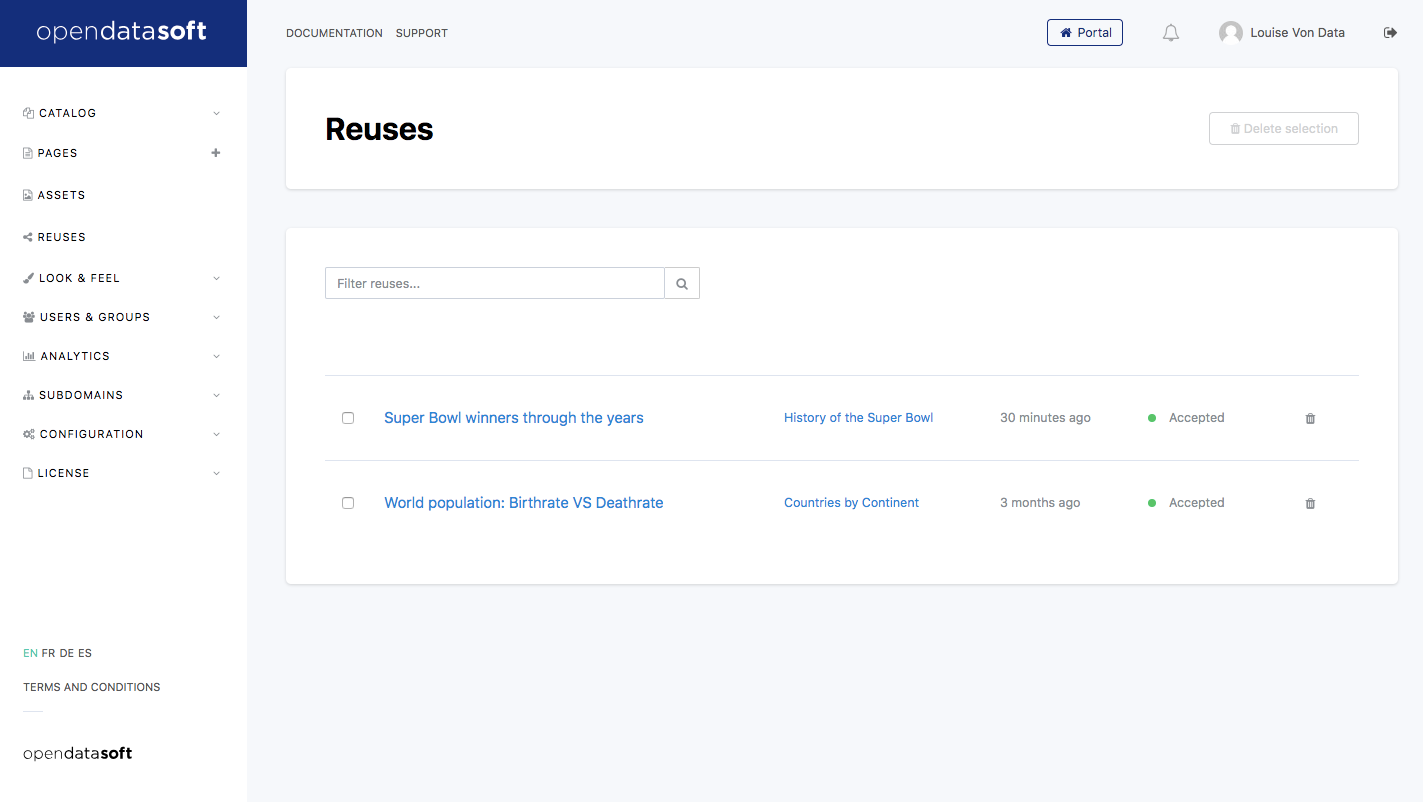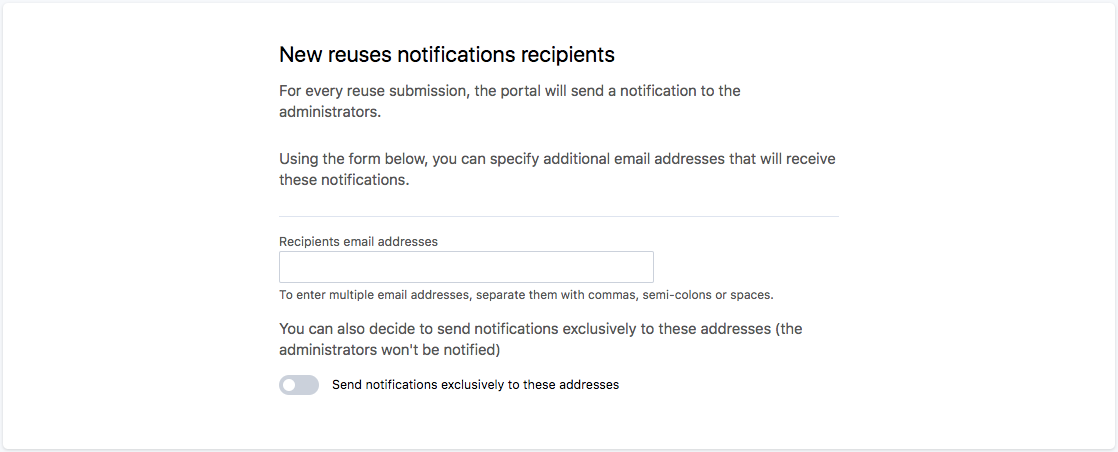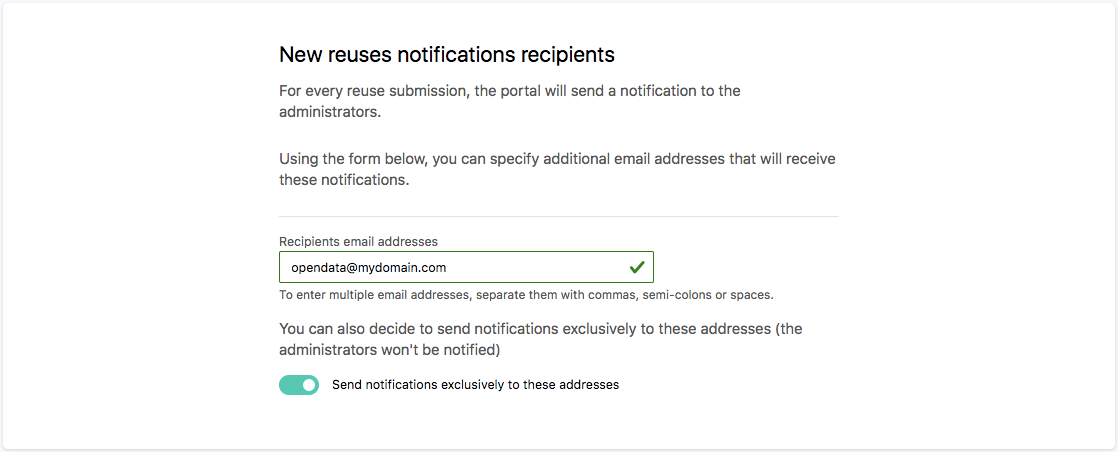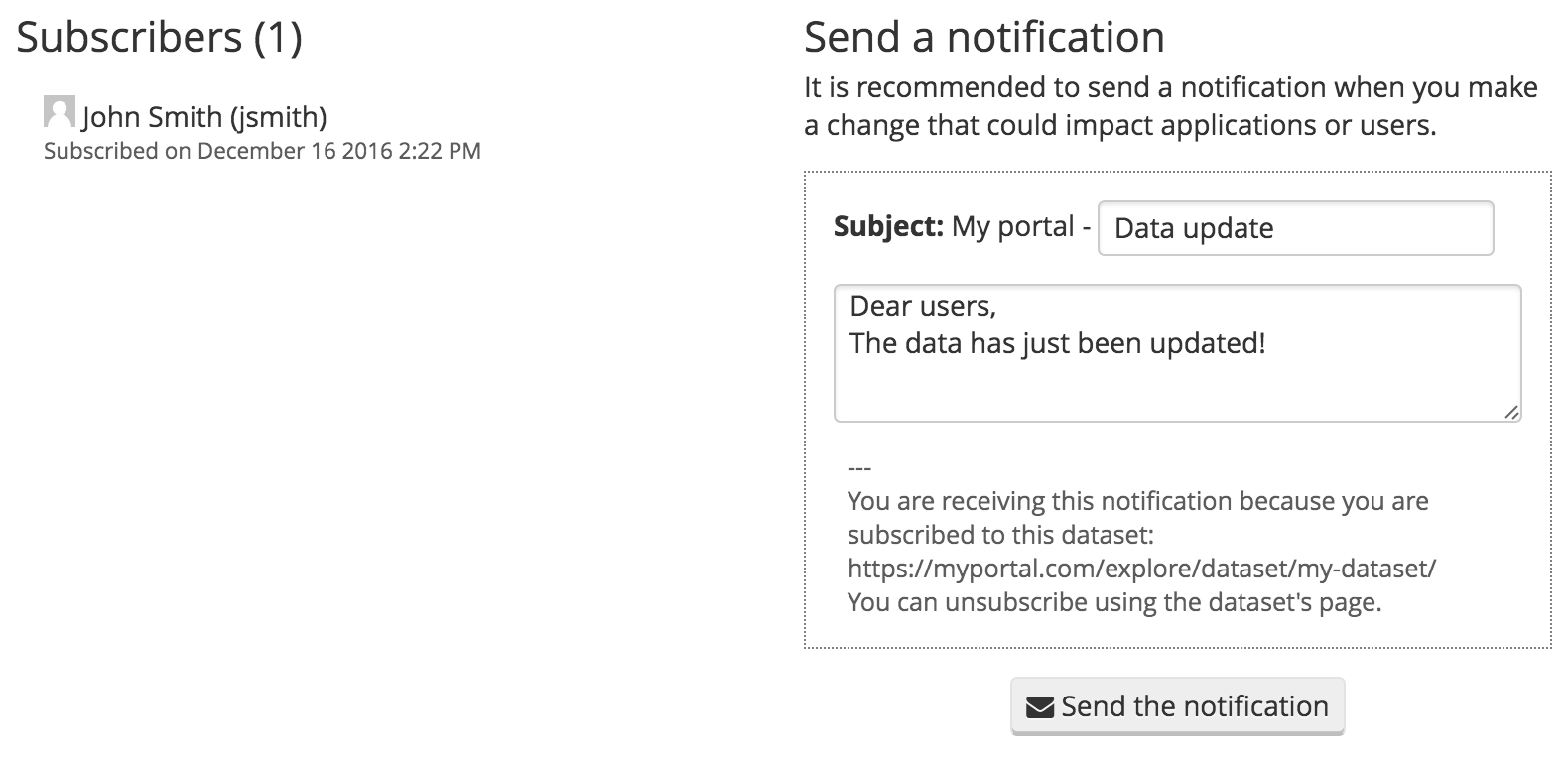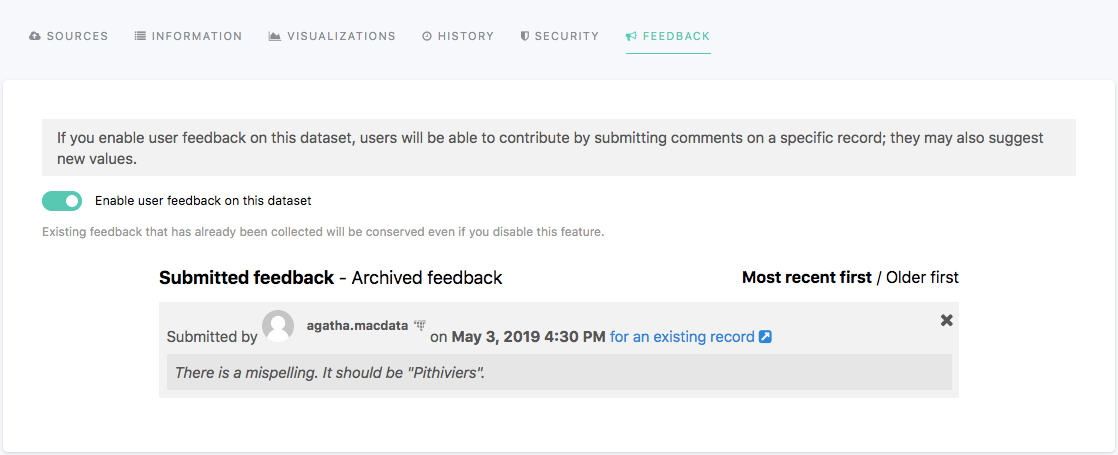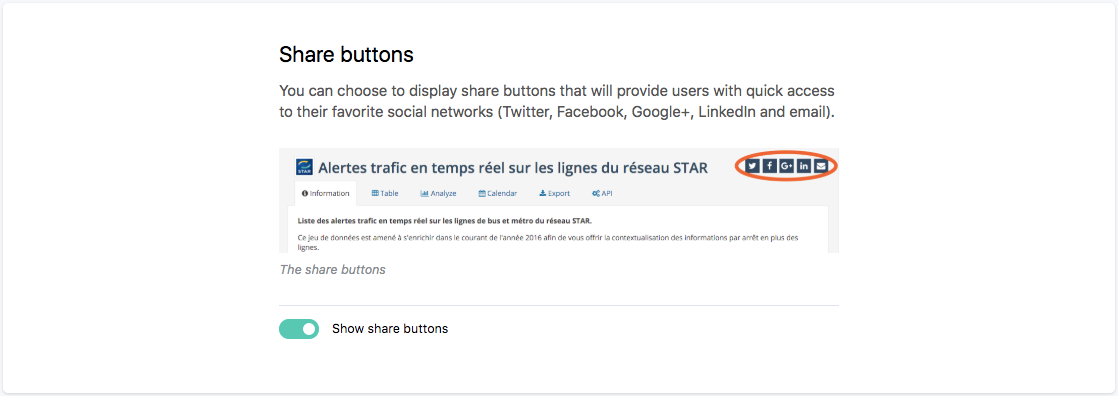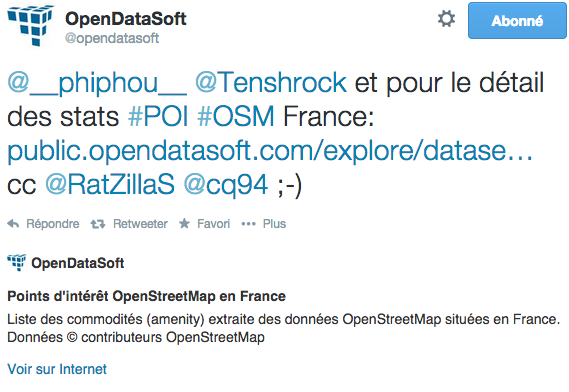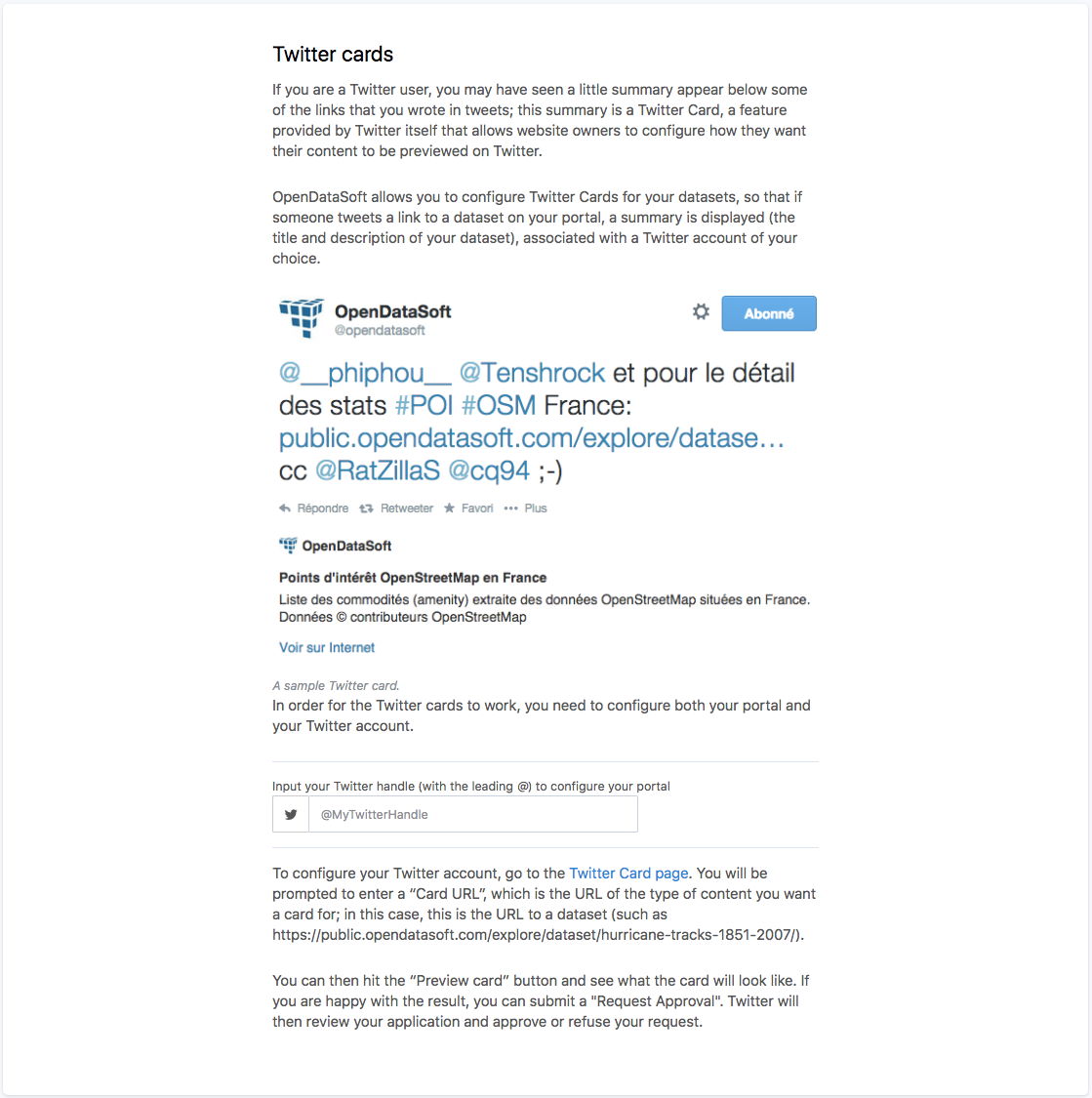Sharing, reusing, communicating
Engaging users
Comments
Users can be allowed to comment on datasets. When activated, an additional Comments tab will be displayed on the dataset page.
To activate this feature, you need to configure a Disqus account to associate with the portal. Disqus is an external comment management system. You will need to set your account's short name and public key in the Configure menu, in the Social networks & sharing section.
If you're unsure about how to get your Disqus credentials, you can follow the detailed steps detailed on their page.
Encouraging reuses
One of the main goals of open data is to have your data reused, thus producing new analyses or new services. Listing these reuses on the related datasets' pages will help promote both the reuse itself as well as your data.
You can access the configuration for reuses in the Configuration menu section of your Opendatasoft back office, under Reuses.
Enabling the reuse feature on your portal will display a new "Reuses" section at the bottom of the Information tab on each dataset page. Additionally, this section will provide a form through which users can submit their reuses and will list all approved reuses.
Note that in order to be displayed on a dataset's page, new reuses must be reviewed and approved by an administrator.
When the reuse feature is enabled, you can additionally allow anonymous users (users without an account) to submit reuses. This is recommended on open data portals or portals which do not allow external users to create an account.
Notifications
By default, for every reuse submission, a notification is sent to that workspace's administrators.
If you wish to add additional recipients, you can enter their email addresses under "New reuses notifications recipients."
If you want notifications sent only to a specific email address or addresses, turn on "Send notifications exclusively to these addresses."For example, you may wish notifications to be sent to only some of the workspace's administrators. In that case, turn on this option and list the email addresses of the administrators who should receive notification.The example below shows what you would see if you wanted to send these notifications only to opendata@mydomain.com.
Contact form recipients
Within the pages you create, you can include a contact form that allows users to send a message to domain administrators. You can add recipients to these messages in the Social networks & sharing section from the Configure menu.
Dataset subscriptions
Users on your portal can subscribe to any dataset they can access; by doing so, they opt-in to receive notifications that the dataset publisher can decide to send at any time, for example, information about a future schema change or to indicate that the data has been updated recently.
The button is only available to users who are logged on the portal using an account. If you want to use this feature on an open data portal, for example, you may want to allow users to sign up on your portal.
As a dataset publisher, you can see the list of users subscribed to your dataset from its back-office configuration page, using the "Subscribers" tab, which appears if you have at least one subscriber on the dataset. From there, you can also send a message to all the users who subscribed to this dataset.
It is advised to warn your subscribers in advance of any change that may impact any of their reuse, such as a change in the schema (renaming an existing field, removing a field) that may cause issues with existing reuses or an update of the data itself if it is not updated very frequently.
User feedback on datasets
This feature is currently in beta and is not available by default. Please contact us if you would like to try this feature on your own portal.
If you wish to gather feedback on the content of a specific dataset, you can activate "User feedback" from its back-office configuration page.
Once the option is active and the dataset is published again, your users will be able to send feedback on your dataset, either for a specific record or to suggest a new record, by clicking on the little chat bubble in the table view.
Doing so will open a form where the user can write a message and optionally suggest new values.
As the publisher of the dataset, you can access the list of all the feedback sent by your users. This is available in the "Feedback" tab of the back-office dataset page. From there, for each feedback sent, you can see the message, the suggested values, and you can archive it once you consider it handled.
This is not a crowdsourcing feature; the suggestions are not automatically applied or added to the dataset. It is up to the dataset's publisher to make sure the relevant feedback is applied to the source.
In order to see this tab in the back-office, you need to have "Publish own datasets"
Improving user sharing
Integrating social media
Share on social media buttons
You can choose to display share buttons that will provide users with quick access to their favorite social networks (Twitter, Facebook, LinkedIn, and email).
You can enable these share buttons in the Social networks & sharing section from the Configuration menu.
Twitter cards
If a user tweets a link to a dataset on your portal, a summary can be displayed (the title and description of your dataset), associated with a Twitter account of your choice.
This is a feature provided by Twitter itself. It should work by default without additional configuration, except if your domain is not whitelisted for summary card by Twitter.
You can check this by previewing a summary on the Twitter Card page. Put the URL of one of your public datasets in the Card URL field on this page.
If, after clicking on Preview, your domain does not appear as whitelisted for summary card, you have to request approvals by clicking on the Request Approval button. You also have to input your Twitter handle to associate your portal with these approved Twitter Cards in the Social networks & sharing section from the Configuration menu.
Dataset information cards
When embedding visualizations, users have the option to display an additional information card on top of the embed.
In the Embeds section in the Configuration menu, you can configure the position of this information card (top or bottom).
You can also force the display of the information card on every embed using the checkbox Force embeds to have a dataset information card displayed at all times.


